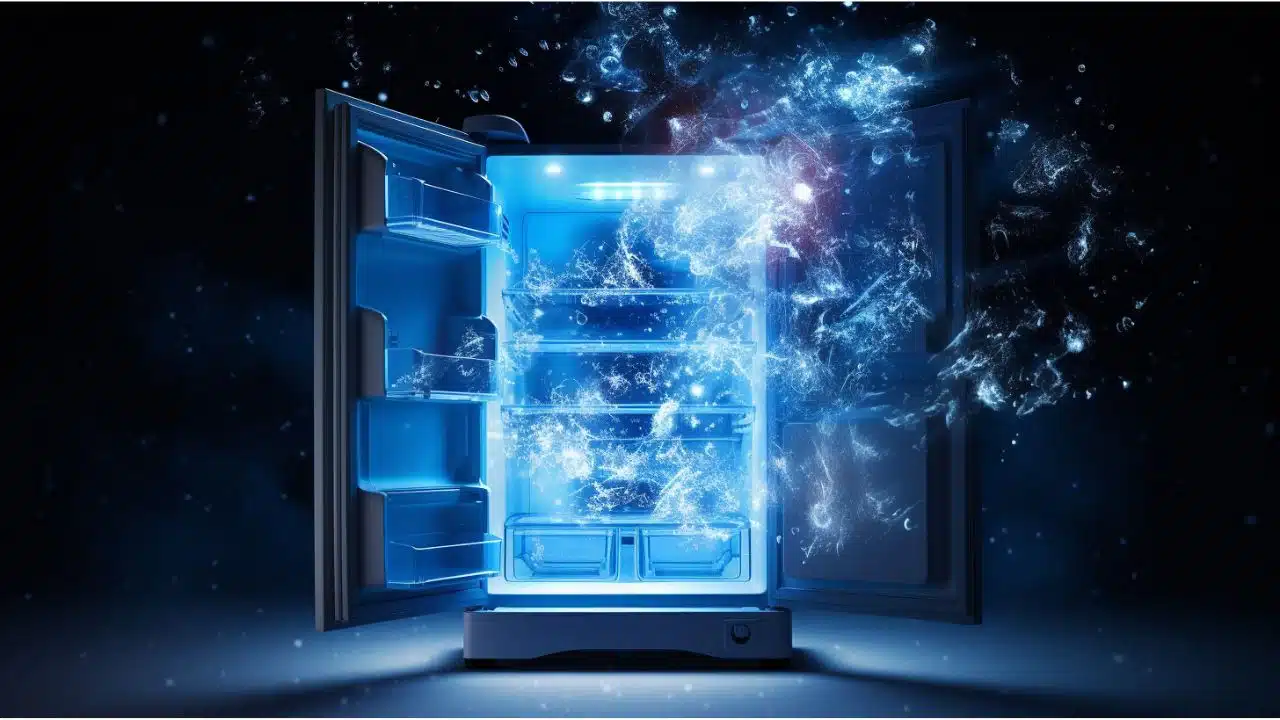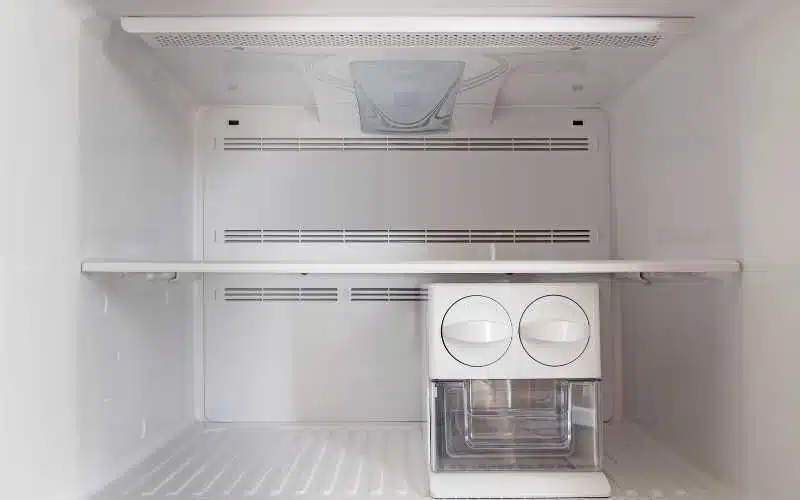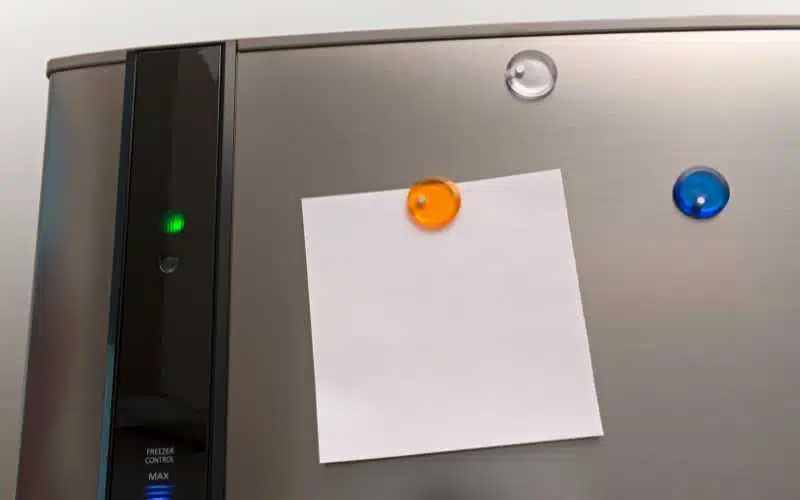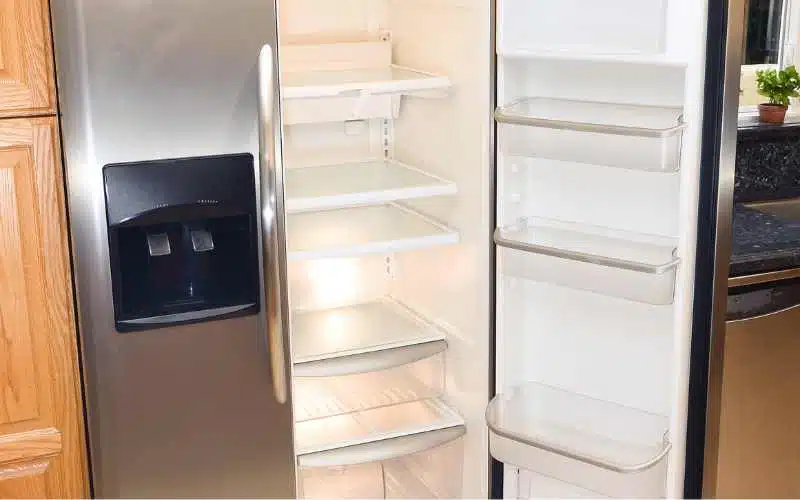A fridge is one of the most useful household appliances. Besides providing you with cold water and drinks to quench your thirst, you can store food items inside.
So it’s no wonder there’s cause for alarm when your fridge develops temperature problems. The most worrying for users is when a fridge is working, but it’s not icing.
There have been several customer reports about temperature problems with the Liebherr fridge. Many causes have been attributed to this problem. These include electrical faults, faulty fans, motors, broken door seals, and excessive and frequent door openings. Other common causes include an improperly plugged-in fridge, poor positioning under direct sunlight, and a fridge that’s leaking water.
To solve this problem, you must first identify your fridge’s problem before you can make repairs. You can fix some of them on your own. For others, you’ll need professional help.
In this article, we’ll highlight the problems that can cause temperature problems for your Liebherr fridge and how you can handle them. Read on to learn more.
5 Reasons Why Liebherr Refrigerator Is Not Keeping Temperature
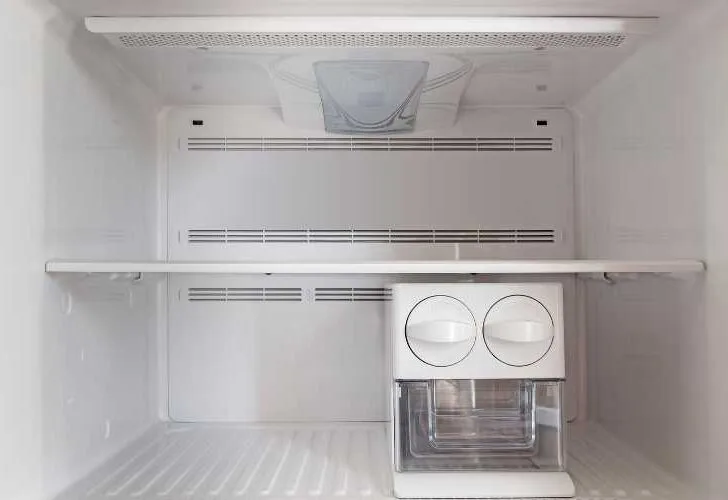
There are several reasons why your Liebherr refrigerator may not work appropriately, including impairments in its ability to maintain temperature.
Diagnosing them isn’t difficult if you know what to explore.
Here are some common reasons that may cause malfunctions:
#1. Water Inside the Fridge
If your fridge is on and the evaporator is working fine, there’s ice formation at the back wall because of the humidity extraction.
The heat released from the compressor helps to evaporate the water drops as they leave the drainage channels.
If these drainage channels become blocked, the water droplets cannot escape effectively anymore.
As a result, the water stays on the rear wall and accumulates, which can cause an inability to maintain the temperature.
#2. Liebherr Alarm Problems
When the freezer compartment or fridge overfills, the fridge doors may need help to close correctly.
That can make your fridge give off an alarm. However, if your refrigerator door seals are bad or broken, the doors will stay open slightly.
That will lead to a slight opening of the doors, which will activate the alarm. You can locate the alarm on some models on the temperature monitor.
It signals when the freezer’s internal temperature is unsafe for frozen food storage. Unfortunately, the alarm won’t function when there’s a power cut.
When you reset the alarm, you will need to do it using the reset alarm pad. It would be best if you also closed the door securely.
If this is not enough, you may need to contact a repair technician to quickly look at whatever is causing the problem.
#3. Liebherr Temperature Problems
Under normal conditions, you should set your Liebherr fridge temperature to about 41 degrees Fahrenheit and the freezer temperature to about 0.4 degrees Fahrenheit.
You can adjust the temperature using the touch icons. The thermostat controls this temperature setting.
When the thermostat is faulty, your freezer can quickly become very warm. When that happens, frost covers the evaporator coils and keeps them from functioning correctly.
Additionally, there is obstruction of the condenser fans. However, this is dependent on the type of damage.
Furthermore, a faulty thermistor can also generate temperature problems for your Liebherr fridge. The thermistor is a sensor for monitoring temperature and connects to the control board.
When it is bad, it can cause your freezer to become excessively cold or not get cold at all. However, this, too, is dependent on the type of damage.
#4. A Malfunctioning Freezer
A power cut can cause a malfunctioning freezer.
Suppose there was a cut in your power supply, and your freezer stopped working shortly afterward; it could be that your freezer got faulty at some point.
Additionally, it is possible that the power cut damaged the electronic controls, which affected the freezer. That can also lead to Liebherr refrigerator temperature problems.
#5. Ice Blockages, Faulty Connections, and Faulty Fan or Motor
Your fridge may not function properly when ice blockages are in your freezer. Likewise, if your freezer’s motor or fan is faulty, it won’t work correctly.
Additionally, if your freezer has faulty connections, it will fail to start. Temperature problems can also arise if your capacitors are not good.
You will need the services of an experienced electrician to examine your freezer closely. They can carry out proper checks and make repairs on electricity-related faults.
#6. Fluctuating Internal Temperature
When you build up frost in your freezer or fridge, that’ll lead to erratic temperatures. Also, if you open the fridge door too frequently, it affects the internal temperature.
That’s because cold air from inside the fridge or freezer mixes with warm air from outside. That can also cause the fridge or freezer not to get cold effectively.
When something obstructs your evaporator fan or, for some reason, your evaporator fan fails, your fridge or freezer won’t work well.
Whatever the cause of your malfunctioning fridge, getting an excellent professional to check it out is essential.
Don’t try to do it yourself, whether it’s a faulty compressor, thermistor, fan, thermostat, or even faulty electrical connections.
You may sustain life-threatening injuries in the process. That’s why contacting a professional electrician is pertinent. They’ll quickly identify and fix whatever the problem is.
If you want to fix your Liebherr fridge, the most cost-effective way to go about it is to use a trusted appliance repair company and hire a fully qualified engineer.
The repairs will come with a six months labor and parts guarantee. You will have access to a quick quote upfront and a stressless time appointment that fits your schedule.
Whatever the problem with your Liebherr freezer and fridge, consulting the best repair service possible for a timely diagnosis and quick repair is the best step.
Why Is My Liebherr Fridge Not Icing Up?
There are multiple reasons why your Liebherr fridge is not icing up. You can fix a good number of them yourself without hiring professional assistance.
Here are some of them:
#1. Incorrect Temperature Set Point
The temperature setting for your refrigerator may not be the appropriate setting. That can cause your fridge not to ice up.
#2. Frequent Door Openings
When you open your fridge door too often, it’ll have temperature problems. Conversely, warm air enters the fridge when you open the door frequently and leave it open.
As a result of the interaction caused by allowing warm air into the fridge and freezer, frost will form. That will affect the temperature inside the fridge.
#3. Gaps, Tears, or Cracks in the Door Seals
When you have gaps, tears, or cracks in the door seals of your fridge, the cold air escapes from the inside, which will impact the fridge’s temperature and prevent it from icing.
Liebherr Refrigerator Working but Not Cooling
It can be unpleasant when you want to use your fridge, turn it on, and it’s not cooling even though it’s working. Several things can cause it.
Below are some common causes of why your Liebherr refrigerator is working but not cooling and how you can fix them.
| Cause | How to Fix |
|---|---|
| Incorrect temperature control setting | Adjust the thermostat to the recommended temperature |
| Dirty condenser coils | Gently clean the condenser coils |
| Bad door seals | Fix the door seals |
| Faulty electrical supply | Ensure appropriate power supply using GFCI outlets |
| Faulty thermostat | Repair or replace the faulty thermostat |
| Faulty compressor, motor, or fans | Repair or replace the compressor, motor, or fans |
How to Fix Temperature Problems in a Liebherr Refrigerator?
If you’re wondering how you can fix the temperature problems in your Liebherr refrigerator, this next section addresses that.
#1. Incorrect Temperature Set Point
This problem is one of the easiest to fix, and it is due to an incorrect temperature setting. To fix this problem, locate the temperature dial for your fridge.
That’s what you need to set the temperature of your fridge in the most optimal range. If you need help finding it, consult your owner’s manual.
You can also download it online using the model number of your fridge. Once you locate the dial, turn it clockwise to adjust the temperature.
The recommended temperature for most refrigerators is between 39.2 degrees Fahrenheit and 41 degrees Fahrenheit. That for the freezer compartment is 64.4 degrees Fahrenheit.
#2. Frequent Door Openings
Frequent fridge door openings can lead to temperature problems. There is a frost build-up when you open the door frequently and allow warm air to enter.
Try to avoid this problem by not opening the door frequently. Additionally, when you open the fridge door, please don’t leave it open for too long.
#3. Gaps, Tears, or Cracks in the Door Seals
Gaps, tears, or cracks in the door seals allow cold air to exchange inside the fridge with warm air outside. That will make the temperature within the fridge unstable.
To fix this problem, check your door seal and look for gaps or breaks between the cabinet and the door seal.
The gaps are usually prominent, and you can find them easily. If you discover gaps in the door seals, use your fingers to pull away from the fridge doors gently.
If the gap persists or you can’t fix it, you should contact an authorized fridge repair company for a proper diagnosis and repair.
